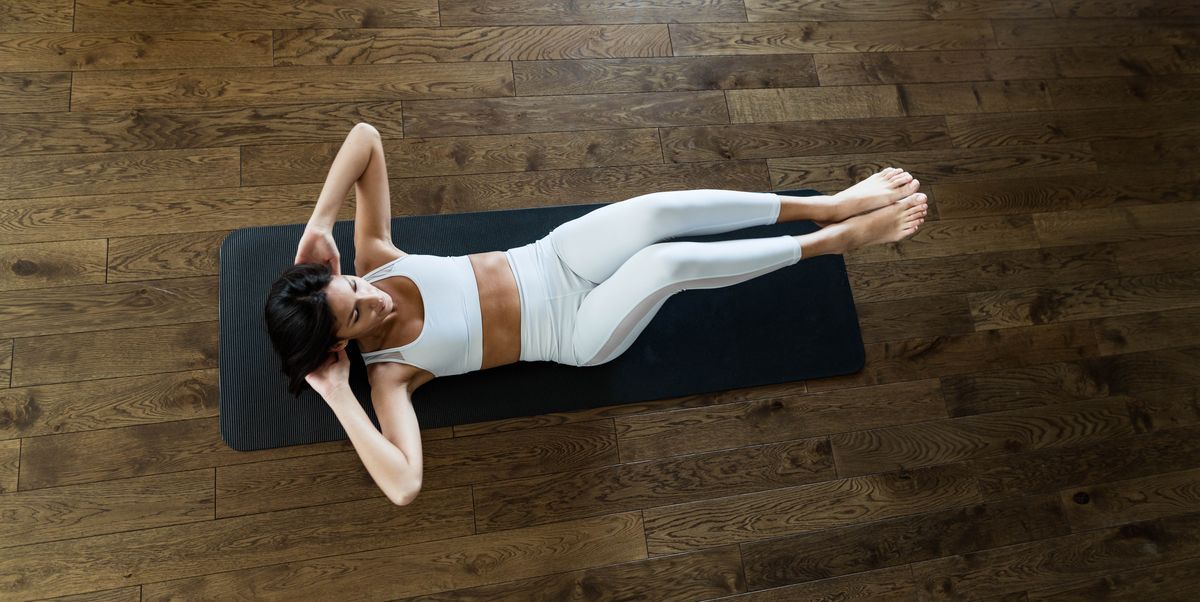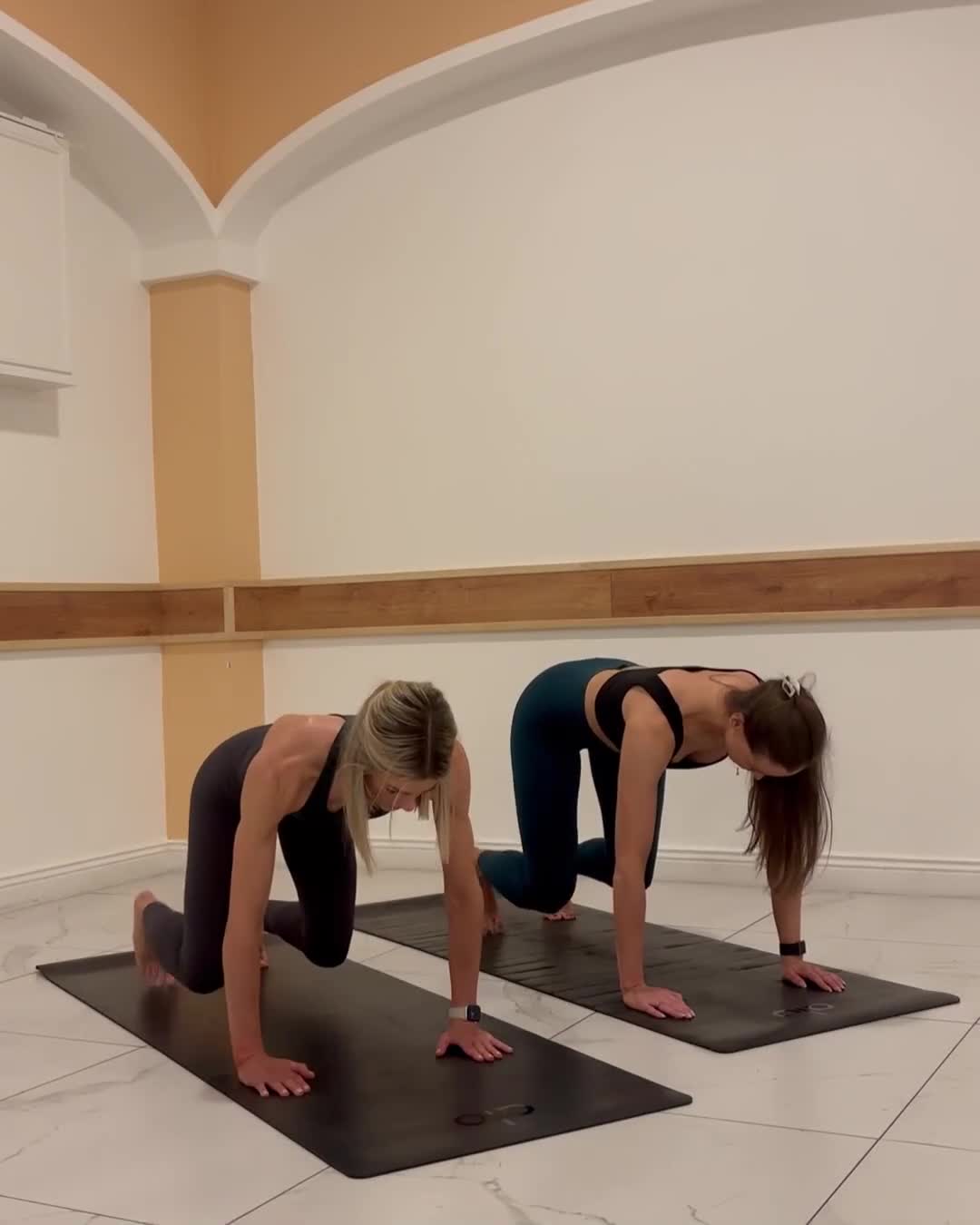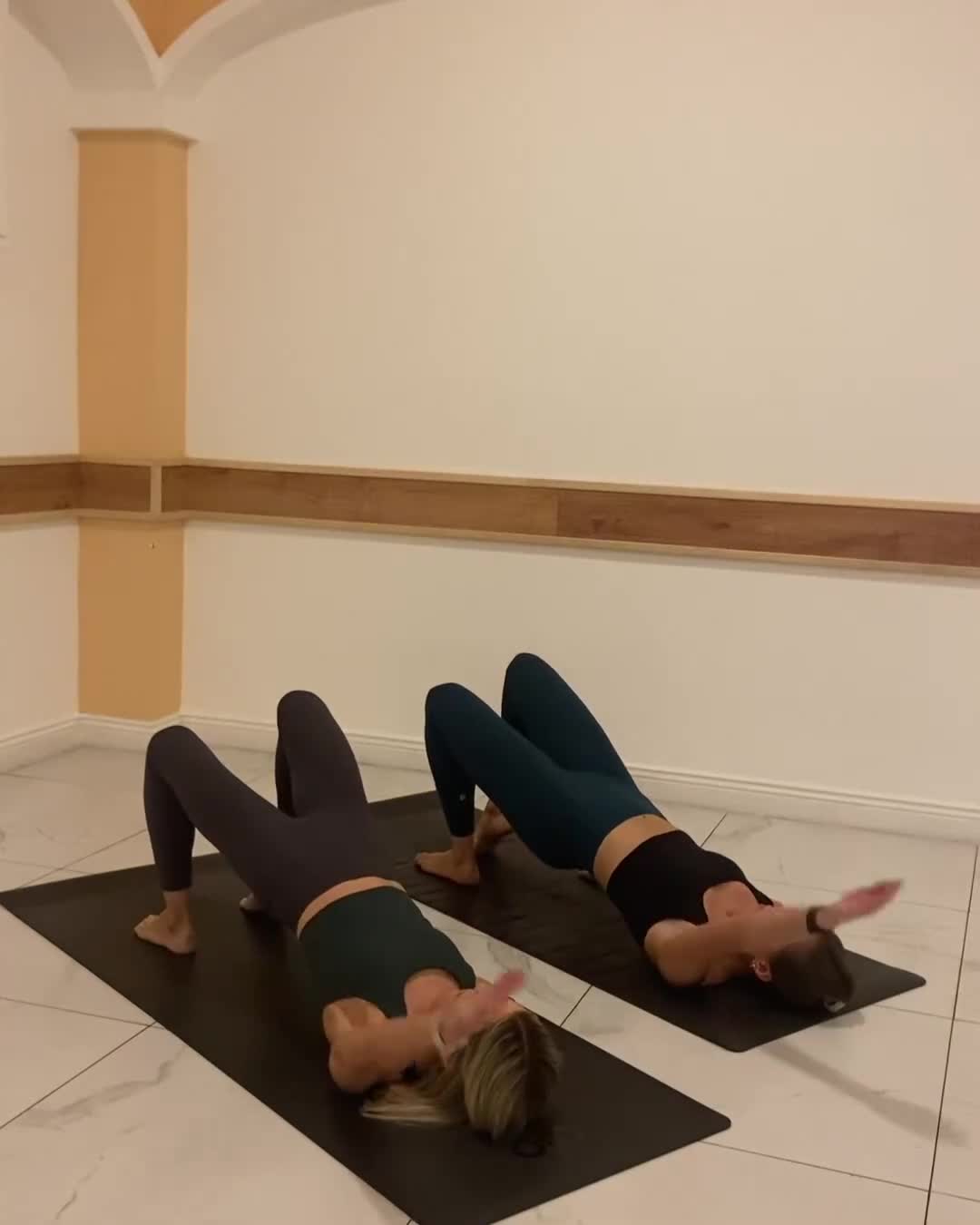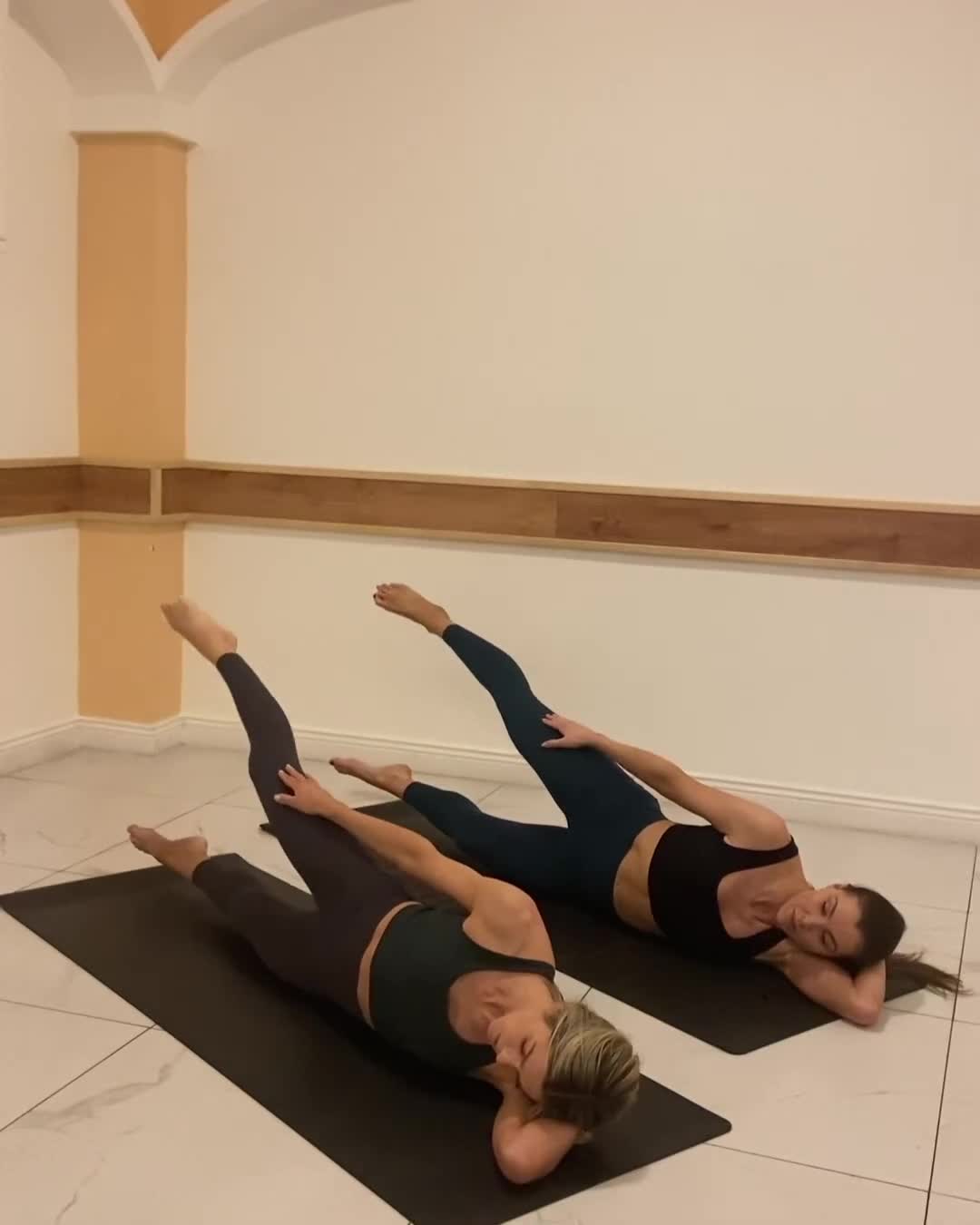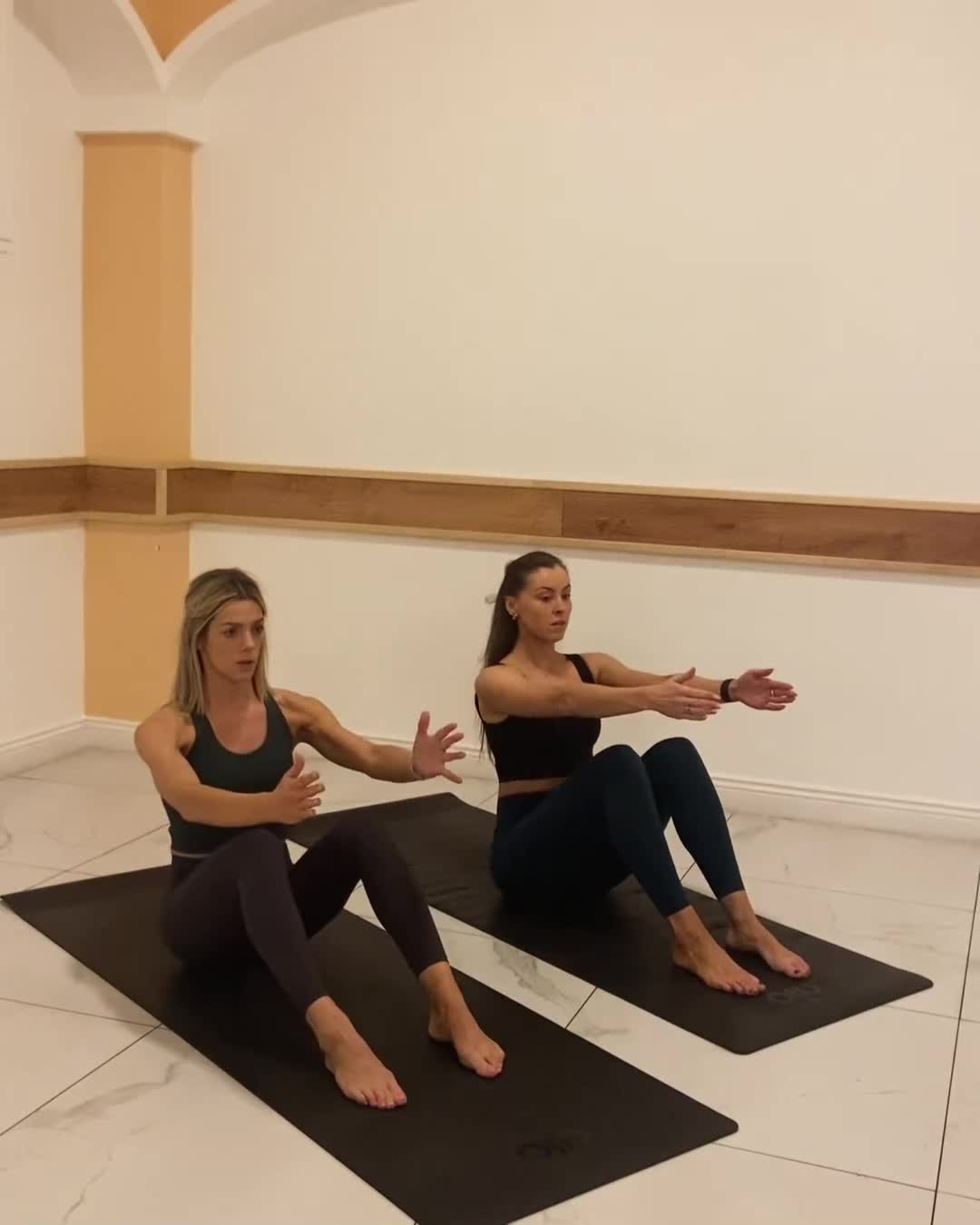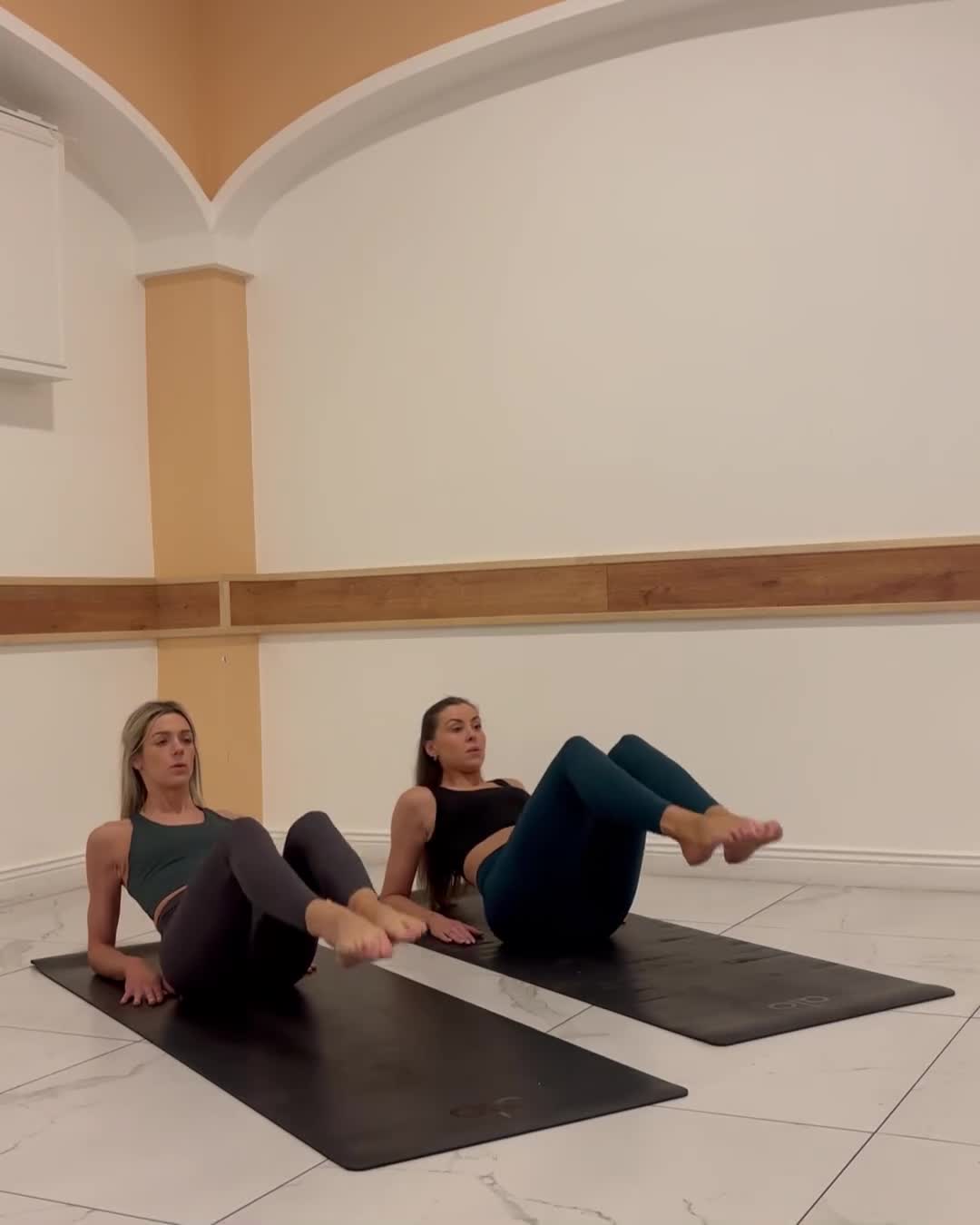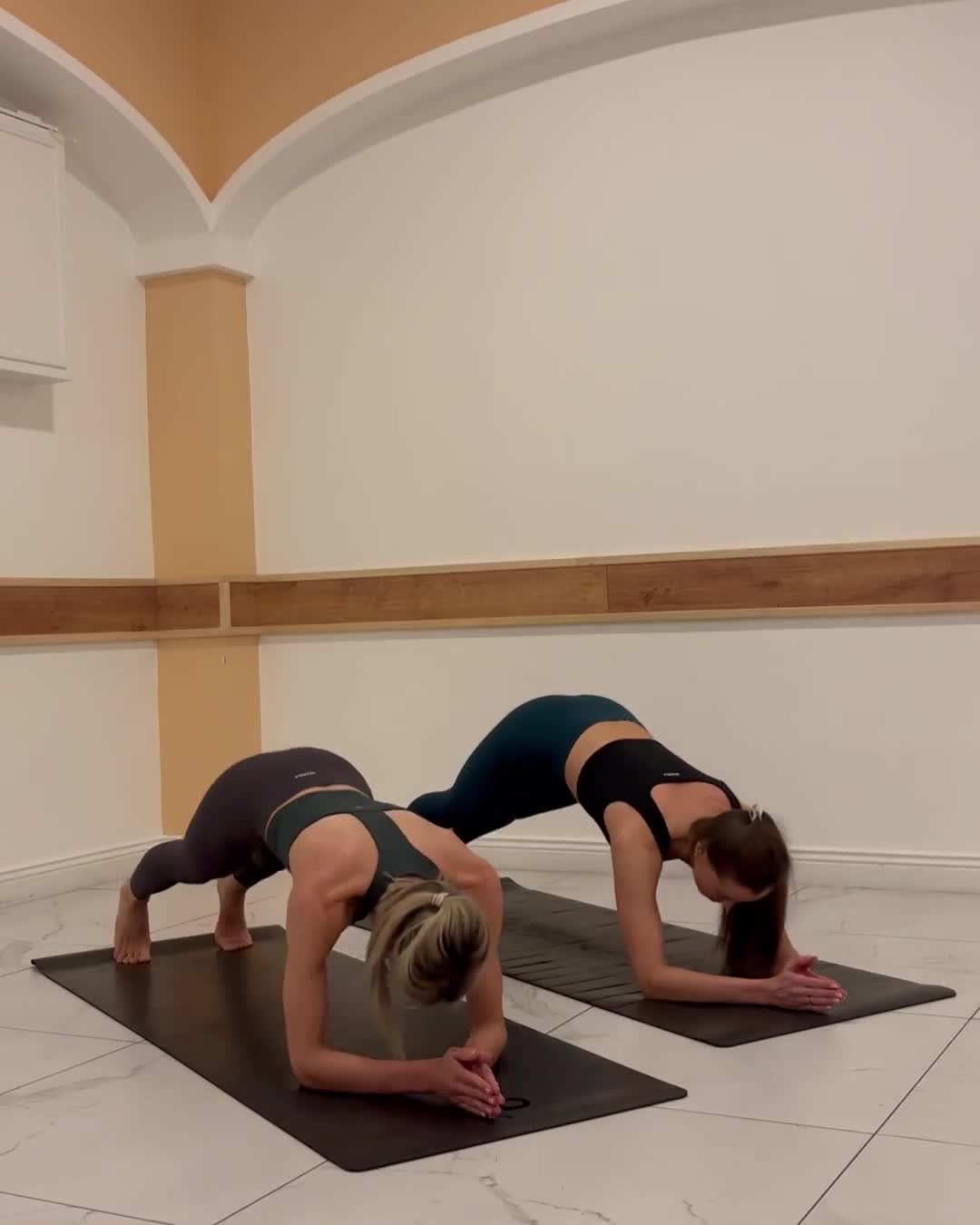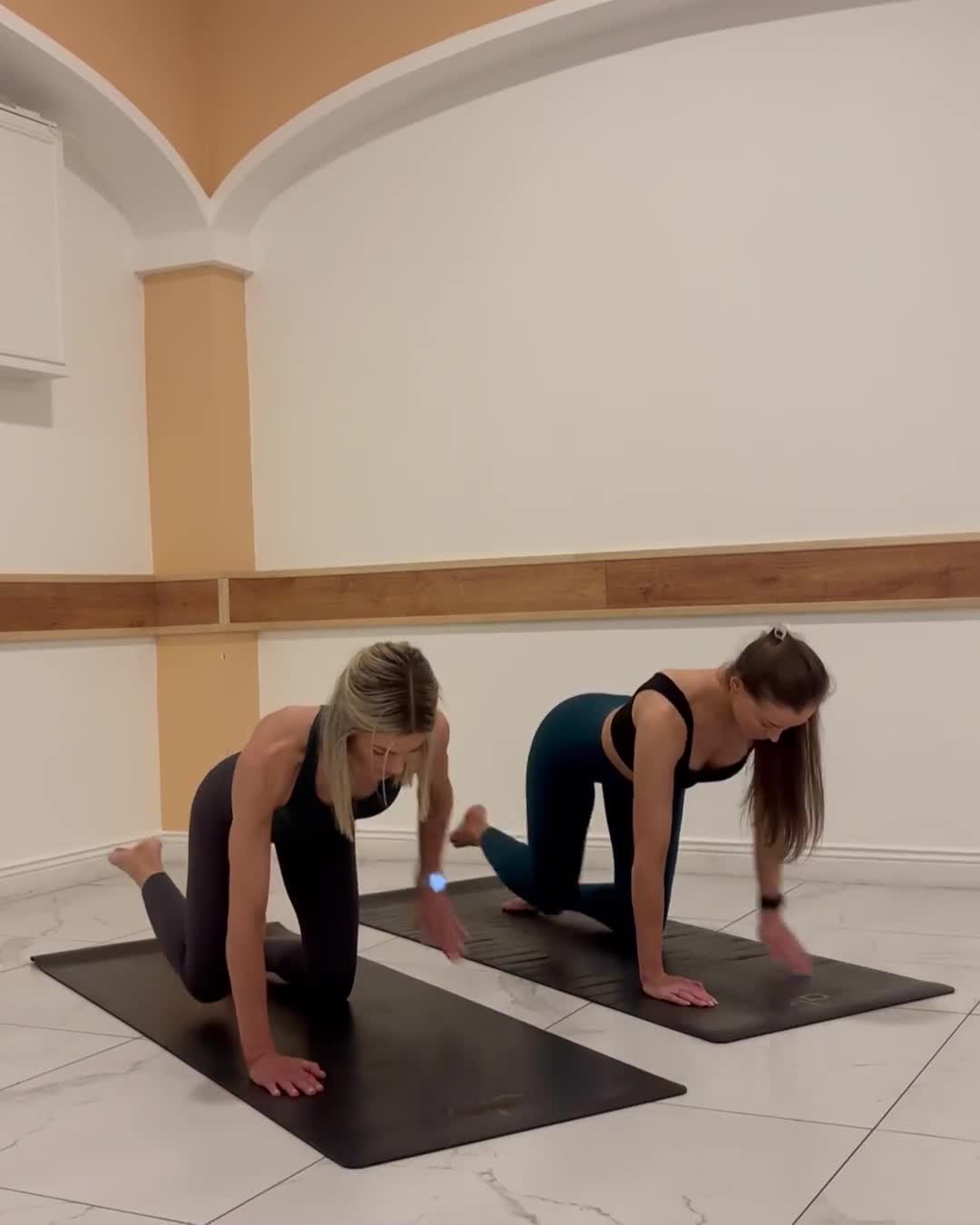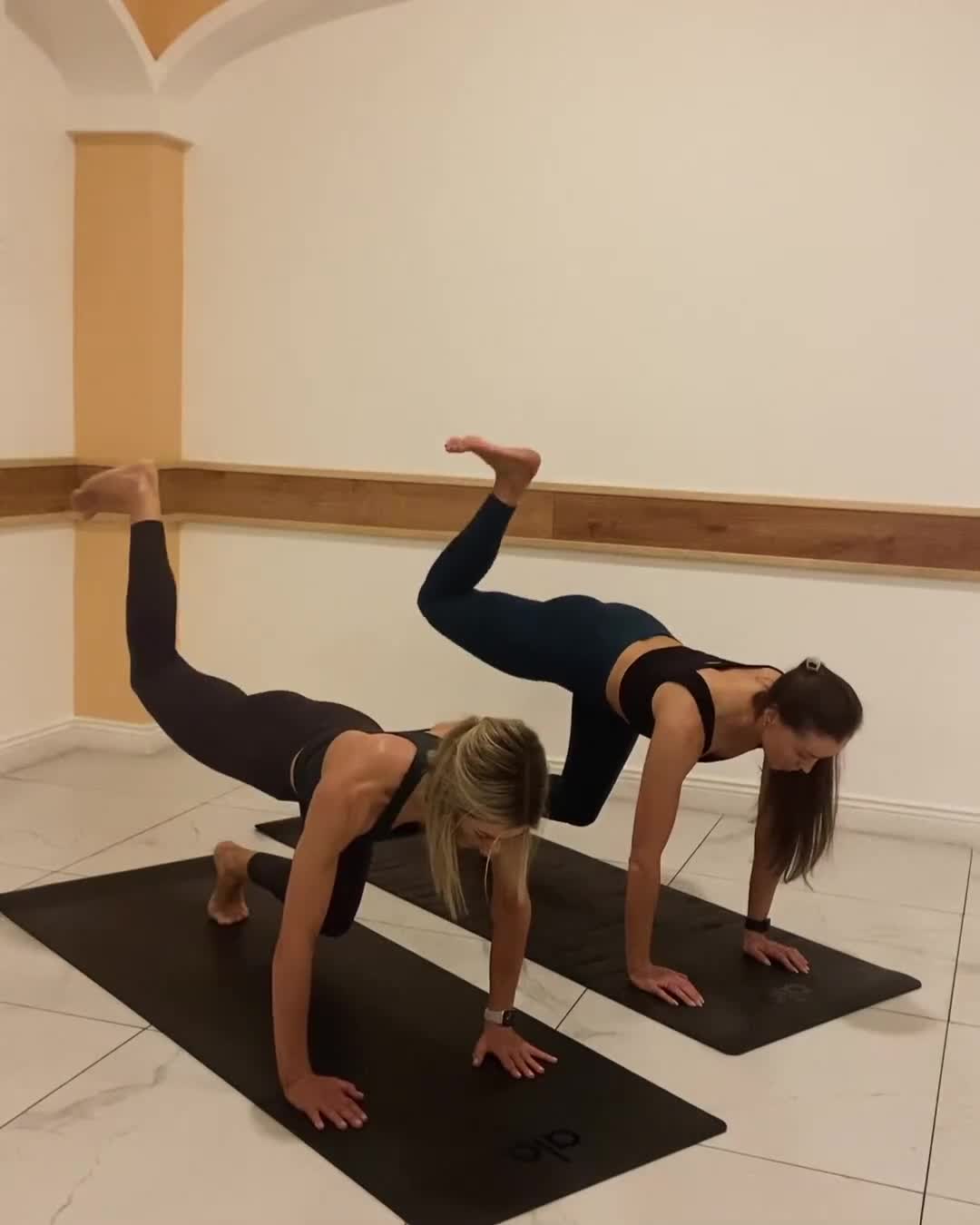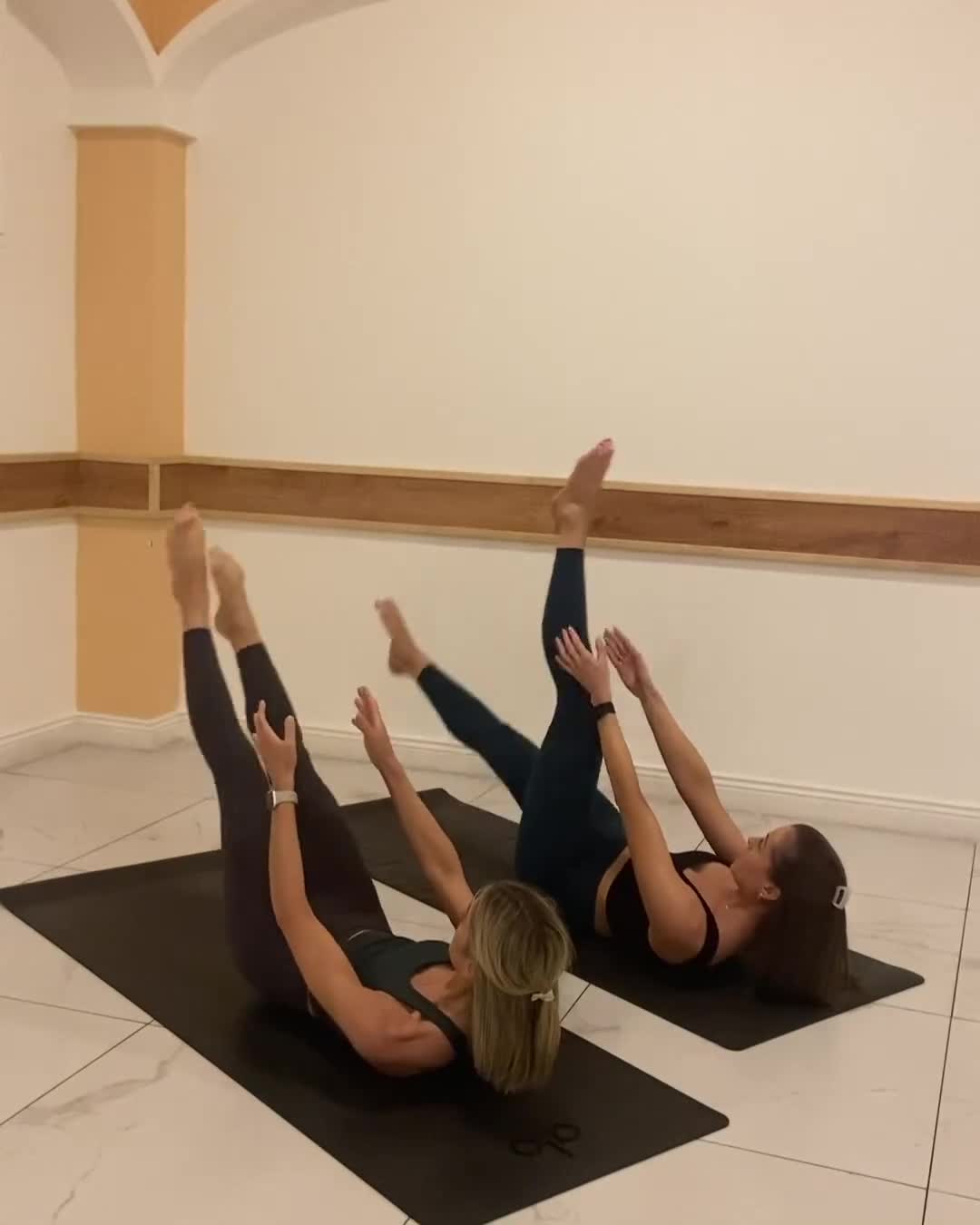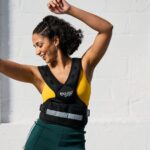Pilates has become the go-to workout for building functional strength and flexibility while being gentle on your joints. In particular, “Core engagement and strengthening are fundamental parts of any Pilates sequence, and show up across a range of exercises (even those you might associate with other muscle groups, like arms or legs!),” says Eloise Skinner, mat and reformer Pilates instructor at studios including Frame and Third Space.
The term “core” often refers to a variety of muscles around the center of your body: ‘TVA’ (transverse abdominis), rectus abdominis, obliques, pelvic muscles, and even the muscles of your lower back, according to Skinner.
Here are 10 core exercises from Aisling Fegan, Pilates instructor and owner of Active Form Pilates—while your abs will feel it most, you can expect a full-body burn, too. (Fegan demonstrates the moves along with another trainer in the below videos.)
Additionally, we asked Skinner to provide some more information and break down how to do each one as well as the muscles involved in each movement. “You can see your core at work in these exercises, stabilizing parts of the body that are in motion, supporting the alignment of your spine, and reducing the risk of injury.”
While all you need is your bodyweight and a mat, “Remember that the breathing technique is an essential part of core engagement in Pilates: breathing in deeply to the sides of your body, and exhaling to draw your belly button up towards your spine (helping to engage your deep core muscles),” Skinner reminds.
10 Pilates exercises for a stronger core
1. Forearm side plank with hip lift and lower, plus arm extension
Hip lifts are killer for actively engaging your internal and external obliques (side abs, part of your core muscles), says Skinner, and your raised arm adds an additional challenge to your balance and coordination through your core and glutes. “As you do the movement, it’s important to keep your hips aligned (you can think of ‘stacking your hips on top of each other’).” It’s a well-rounded exercise that integrates shoulder engagement and core strength, as well as inner-thigh and hip-flexor involvement.
2. Bear plank with toe taps to downward dog
Holding a bear plank (table-top position, with your knees hovering off the ground) activates your central core muscles, including your obliques and lower-back muscles, explains Skinner. It requires stability to hover, while the toe taps introduce dynamic movement and instability, so your core has to work to harder “to maintain correct neutral alignment in your back.”
Looking for more low-impact exercise ideas? Join WH+ to get the exclusive 4-week walking plan that burns fat and builds muscle at the same time.
“Downward dog offers a hamstring stretch, improves flexibility, and provides an opening of your shoulders, which can help your body reset before taking another round of bear plank,” she continues.
3. Glute bridge with arm reach and heel raise
Requiring focus and control, this movement works your glutes, hamstrings, lower-back muscles and core, while adding some upper-body mobility. Once again, holding the bridge while extending your arm and lifting your opposite heel requires core and pelvic stabilization to stop your hips from dropping and avoiding an arch in your lower back, while also challenging your balance, Skinner says.
4. Adductor hold with side-lying single-leg lift
Both your external and internal obliques are heavily engaged in the side-lying position as they prevent your torso from rolling or collapsing as you raise both legs. In addition, your quadratus lumborum, a muscle located in your lower back, must work to keep your pelvis aligned, says Skinner.
With your bottom leg engaged in an isometric hold (static muscle contraction) where your adductors (inner thighs) work to keep your bottom leg lifted, your transverse abdominis, part of your deep core layer and which wraps around your trunk from front to back, stabilises your pelvis.
5. Roll back with alternating elbow reach back
Targeting your rectus abdominis (the well-known superficial ‘six-pack’ abs, “responsible for supporting as you bend your spine forward,” says Skinner), your transverse abdominis (part of your ‘deep core’ muscles) and your obliques through the rotational movement, this exercise also activates your shoulder and upper-back muscles, “challenging deltoid and trapezius engagement,” she explains. Skinner recommends focus on stabilizing the position from your deep abdominals rather than pulling with your arms, and add a light weight if you’re looking for more of a challenge.
6. Forearm-supported lean back with double toe tap
One for your lower abs, lifting and lowering both legs puts the emphasis on your hip flexors and the lower portion of your rectus abdominis and transverse abdominis, while the double toe tap is more demanding that alternating taps because your core works harder to “control the movement of your legs while maintaining your spine in the correct position,” Skinner advises.
7. Forearm plank to dolphin
Here’s a dynamic movement that flows between a forearm plank and dolphin (like Downward-Facing Dog, but on your forearms), Skinner observes. You engage your core “to prevent your back from arching in the plank and to maintain stability in your hip raise to dolphin,” where your posterior chain (glutes, hamstrings, back muscles like lats) is also engaged. Expect some shoulder engagement (deltoids) to hold you in the forearm plank and to maintain that position in the transition back to dolphin.
8. Bird dog with sweeping arm and knee
Targeting multiple muscle groups, this compound exercise engages your core primarily, but also gives your upper and lower body a workout, too. Your rectus abdominis, transverse abdominis and erector spinae (muscles that run along your spine and that work to straighten and rotate your back) keep your spine and lower body stable – especially given you get no rest with your knee hovering above the ground in the start position – while your shoulders and upper back help to sweep your arm. “Your hip flexors and quads stay engaged to extend your leg and hold it in position just off the ground, and as it moves through a range of motion,” Skinner explains.
9. Bear plank with donkey kick
Much like all the other exercises here, this movement challenges your core, as it works to stabilize your body during both the bear plank and while your legs move, avoiding lower-back arching and ensuring spinal alignment, says Skinner. “The donkey kick targets your glutes and hamstrings as you move your leg up towards the ceiling for an added posterior-chain boost ((make sure this motion doesn’t cause your back to arch!), and your shoulders and upper-back muscles stay engaged to hold your upper body in place.”
10. Alternating leg raise
Raising your head and shoulders (often referred to as the ‘curl-up’) adds an extra challenge by targeting your upper rectus abdominis, while your lower abs work to raise and stabilize your legs, observes Skinner. “Your hip flexors, quads and glutes also come into play to lift and stabilize your extended leg, while briefly pausing at the top increases time under tension, building muscular endurance (your muscles’ ability to keep exerting force against resistance).”
Read the full article here


